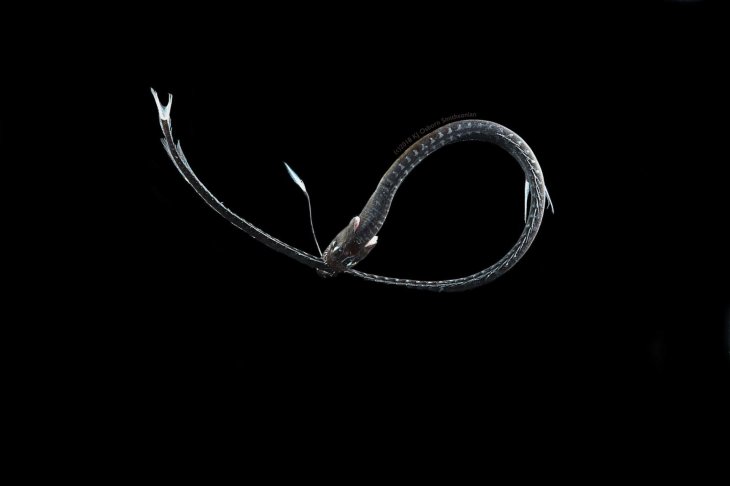Scientists Just Found The Blackest Fish Ever That Absorbs 99.5% Light
Dhir Acharya - Jul 21, 2020

Scientists have discovered 16 new species of deep-sea fishes hardly reflecting the light that hits their skin, similar to the blackest material Vantablack.
- Japan Hydrogen Breakthrough: Scientists Crack the Clean Energy Code with Mind-Blowing 1,000% Efficiency Jump
- 'Five-second rule' For Food Dropped On The Floor: Is It True?
- Scientists Want To Send 6.7 Million Samples, Including Sperm, To The Moon
We have had articles about the blackest material ever created, but today, we introduce to you the blackest thing alive, from nature, not artificial or man-made at all.

Smithsonian scientists and collaborators have discovered 16 new species of deep-sea fishes hardly reflecting the light that hits their skin, similar to what happens with the blackest material Vantablack.
The scientists say that these fish absorb light with such efficiency that even when they’re in bright light, the human eye cannot really see their features. And when they are in the ocean, surrounded by bioluminescent light, these fish disappear. Some of them absorb over 99.5 percent of the light hitting their skin.

The solar rays can penetrate up to 20 meters down the ocean and don’t go beyond 200 meters. At such depths, the only light source is the bioluminescence from deep-sea creatures, which is used for attracting mates, distracting predators, luring prey, and exposing nearby animals.
The study’s co-author Karen Osborn got interested in the skin of these fish when she tried to take pictures of some blackest fish. Even with sophisticated equipment, she couldn’t capture any detail.
“It didn’t matter how you set up the camera or lighting—they just sucked up all the light.”

According to the new research, their near-complete light absorption relies on melanin, the pigment that colors and protects our skin from sunlight. Not only do these fish have a lot of this pigment in their skin but it’s also arranged in a special way. The pigment cells consist of melanosomes that waste very little light due to their shape, size, as well as positioning. Thanks to the arrangement, the melanosomes direct the light they don’t absorb immediately toward neighboring melanosomes in the cell, which then absorb the remaining light. Osborn said:
“Effectively what they’ve done is make a super-efficient, super-thin light trap. Light doesn’t bounce back; Light doesn’t go through. It just goes into this layer, and it’s gone.”
The melanin-based system in these fish is a lot smaller and simpler, which could help improve the manufacturing of ultra-black materials. As explained by researchers, by mimicking this strategy, we could produce cheaper, more durable, and flexible ultra-black materials to use in optical techs like cameras, telescopes, and camouflage.
>>> Scientists Has Created The New Blackest Material Ever, Absorbing 99.96% Of Incoming Light
Featured Stories

Features - Jul 01, 2025
What Are The Fastest Passenger Vehicles Ever Created?

Features - Jun 25, 2025
Japan Hydrogen Breakthrough: Scientists Crack the Clean Energy Code with...

ICT News - Jun 25, 2025
AI Intimidation Tactics: CEOs Turn Flawed Technology Into Employee Fear Machine

Review - Jun 25, 2025
Windows 11 Problems: Is Microsoft's "Best" OS Actually Getting Worse?

Features - Jun 22, 2025
Telegram Founder Pavel Durov Plans to Split $14 Billion Fortune Among 106 Children

ICT News - Jun 22, 2025
Neuralink Telepathy Chip Enables Quadriplegic Rob Greiner to Control Games with...

Features - Jun 21, 2025
This Over $100 Bottle Has Nothing But Fresh Air Inside

Features - Jun 18, 2025
Best Mobile VPN Apps for Gaming 2025: Complete Guide

Features - Jun 18, 2025
A Math Formula Tells Us How Long Everything Will Live

Features - Jun 16, 2025
Comments
Sort by Newest | Popular